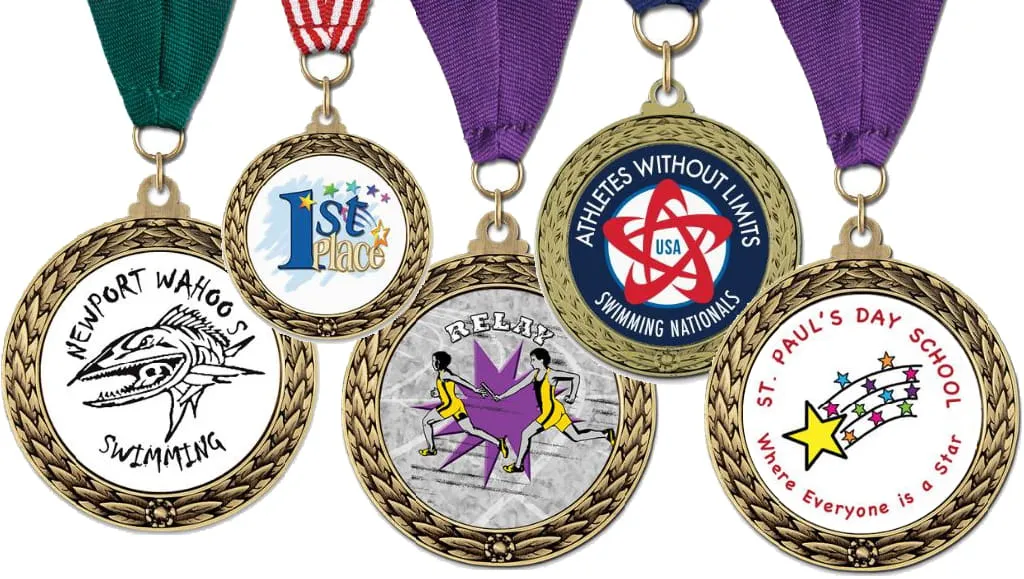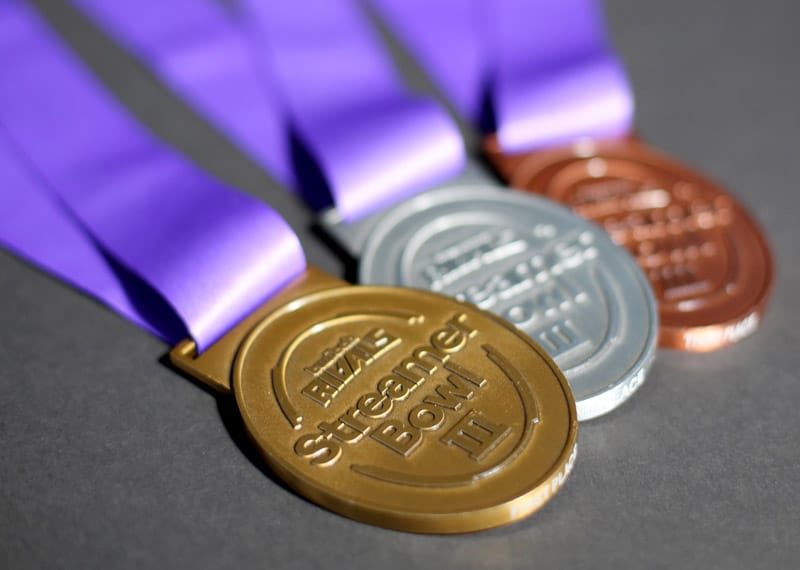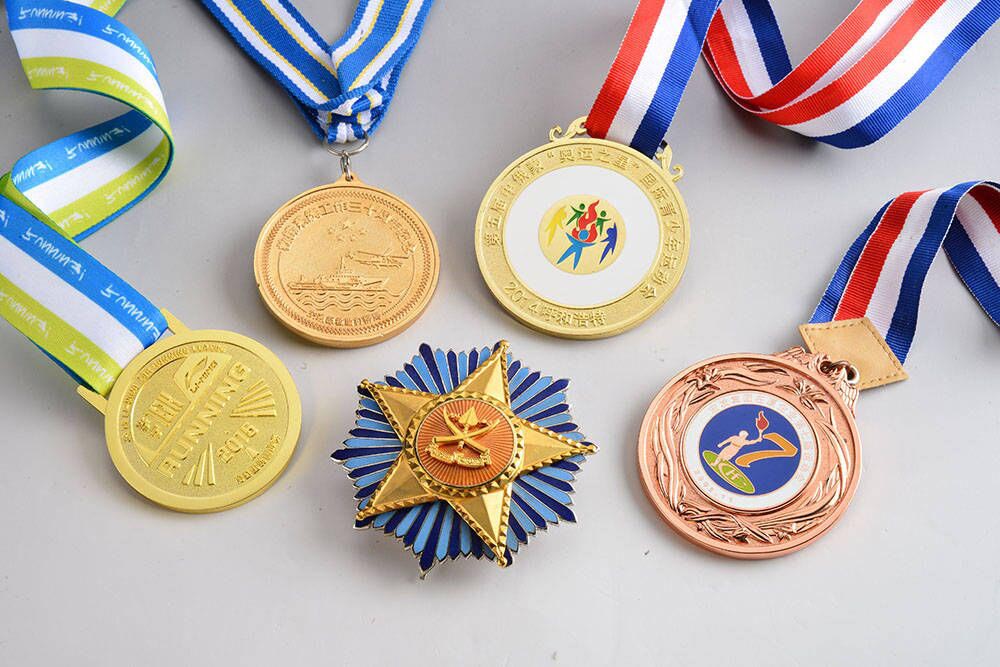How Can Designers Create Custom Medals That Appeal to Global Audiences?
Creating custom medals that resonate across diverse cultures requires strategic thinking and cultural sensitivity. The modern world demands recognition pieces that transcend geographical boundaries whilst maintaining meaningful connections with recipients from different backgrounds.
Designing custom medals for global audiences presents unique challenges that traditional medal makers rarely encountered. Cultural symbols carry different meanings across regions — what represents prosperity in one culture might signify something entirely different elsewhere. Colour psychology varies dramatically between Eastern and Western societies, and religious or political imagery can inadvertently exclude or offend certain groups.
The complexity deepens when considering practical constraints. Budget limitations, manufacturing capabilities, and shipping requirements all influence design decisions. Balancing universal appeal with personalised touches demands careful consideration of every design element.
Successful medal design tips centre on several core principles:
- Cultural research to understand regional preferences and sensitivities
- Universal symbolism that speaks to shared human values
- Quality materials that convey prestige regardless of cultural context
- Flexible customisation options for local adaptation
- Thoughtful presentation that enhances perceived value
The most effective approach combines thorough market research with creative innovation. Designers must navigate between creating something universally appealing whilst avoiding generic, meaningless designs. This balance requires deep understanding of both design principles and cultural nuances that influence how different audiences perceive and value recognition awards.
What Purpose and Audience Should Designers Define Before Creating Custom Medals?
Successful medal purpose identification forms the foundation of effective design strategy. Sports medals require dynamic elements that capture competitive spirit, whilst academic awards demand sophisticated symbolism reflecting scholarly achievement. Corporate recognition medals need professional aesthetics that align with business values and brand identity.
Understanding your target audience extends beyond basic demographics to encompass deeper cultural values and preferences. Recipients from collectivist cultures may appreciate group-oriented symbolism, whereas individualistic societies might favour personal achievement motifs. Age demographics also influence design choices – younger audiences often respond to contemporary aesthetics, whilst traditional designs may resonate better with established professionals.
Cultural sensitivities require careful navigation to avoid unintended offense or misinterpretation. Colour symbolism varies dramatically across cultures:
- Red signifies prosperity in Chinese culture but danger in Western contexts
- White represents purity in Western traditions yet mourning in some Asian cultures
- Green symbolises nature universally but carries religious significance in Islamic countries
Religious and political symbols demand particular attention. A design featuring an eagle might represent freedom in American contexts but could be perceived differently in regions with complex historical relationships. Research local customs, religious practices, and historical contexts before incorporating any symbolic elements.
The intersection of purpose, audience, and cultural awareness creates the framework for meaningful medal design that transcends geographical boundaries whilst respecting local sensibilities. For instance, the prestigious Medal of Freedom awarded in the United States is a prime example of how a medal can encapsulate significant cultural and national values while acknowledging individual achievements.
How Can Materials and Textures Enhance the Appeal of Custom Medals?
Innovative materials are the key to creating medals that captivate audiences worldwide with their superior quality and visual impact. By using premium metal bases and enamel coatings, we can ensure that these awards are not only durable but also exude the prestige that recipients expect from such meaningful recognition.
Understanding Enamel Finish Options
When it comes to enamel finishes, there are two main options to consider: hard enamel and soft enamel.
Hard Enamel Finishes
Hard enamel finishes create a smooth, polished surface that sits flush with metal edges, producing a sophisticated appearance ideal for corporate awards and high-end recognition pieces. The glass-like finish resists scratches and maintains its lustre over time.
Soft Enamel Finishes
On the other hand, soft enamel finishes offer a textured feel where enamel sits below the raised metal lines, creating tactile depth that appeals to recipients who value craftsmanship details. This technique allows for more intricate colour gradations and artistic effects.
Adding Dimensional Elements
In addition to choosing the right enamel finish, we can also enhance the appeal of custom medals by incorporating dimensional elements.
3D Elements
Medal textures gain remarkable depth through strategic 3D elements that transform flat surfaces into engaging sculptural pieces. Raised logos, embossed patterns, and layered components create visual interest that photographs beautifully for social media sharing.
Antique Finishes
Another way to add dimension is through the use of antique finishes. These oxidised treatments provide timeless elegance by highlighting intricate details while conveying heritage and tradition. They work particularly well for:
- Academic achievement medals
- Historical commemorative pieces
- Military-style recognition awards
- Heritage organisation honours
The combination of base materials and surface treatments results in medals that feel substantial in recipients’ hands while maintaining visual appeal across different cultures.
Additionally, it’s interesting to note how certain materials used in antique finishes can evoke a sense of nostalgia or historical significance. This emotional connection can further enhance the perceived value of custom medals, making them not just awards but cherished keepsakes.
Why Should Designers Consider Custom Shapes and Symbolism in Medal Design?
Custom shapes transform medals from generic awards into distinctive representations of achievement. Breaking away from traditional circular designs allows medals to embody the unique identity of events, organisations, or accomplishments they celebrate.
Strategic Shape Selection
Custom medal shapes serve as immediate visual identifiers. A star-shaped medal instantly communicates excellence, while a shield design conveys protection and honour. Sports medals might adopt equipment silhouettes—tennis rackets for tournaments or running shoe outlines for marathons—creating instant recognition and connection with recipients.
Meaningful Symbolism Integration
Symbolism in medals creates emotional resonance across diverse cultures. Mountains represent overcoming challenges and reaching peaks of achievement, making them powerful universal design elements. Trees symbolise growth and development, whilst puzzle pieces communicate teamwork and collaboration. These symbols transcend language barriers, speaking directly to shared human experiences.
Balancing Universal and Personal Elements
Successful Design Tips for Custom Medals That Resonate with Global Audiences involve layering meaning. A corporate medal might feature a globe (universal connectivity) combined with company-specific iconography. Academic awards could incorporate books or graduation caps alongside institutional emblems, ensuring both broad appeal and personal significance.
The key lies in selecting symbols that maintain clarity at small scales whilst conveying profound meaning. Simple, bold shapes work best, avoiding intricate details that may lose impact when reduced to medal size.

What Typography and Engraving Techniques Best Suit Global Medal Designs?
Typography styles, a crucial aspect of graphic design, must prioritise readability whilst complementing the medal’s visual theme. Sans-serif fonts like Helvetica or Futura work exceptionally well for global audiences, offering clean lines that translate across cultures without losing clarity. Script fonts can add elegance but should be reserved for decorative elements rather than essential information. Click here to learn about what is the history and global appeal of Custom Challenge Coins?.
Advanced engraving techniques, such as those used in granite gravestone engraving, transform flat text into dimensional storytelling elements. Deep etching creates pronounced depth that catches light beautifully, making text visible from multiple angles. Colour-fill engraving adds vibrancy by incorporating contrasting hues within etched areas, perfect for highlighting key words or dates.
Strategic Text Placement Considerations
- Primary information (achievement title, year) should occupy prominent positions
- Secondary details (recipient names, organisations) work best in smaller, complementary areas
- Multilingual text requires careful spacing to maintain visual balance
The choice between raised and recessed lettering depends on the medal’s intended use. Raised text offers tactile appeal for ceremonial presentations, whilst recessed engraving provides durability for frequently handled awards.
Accessibility remains paramount when designing for diverse recipients. Text size should never fall below 8-point equivalent, and high contrast between text and background ensures visibility for recipients with varying visual capabilities. Testing typography choices across different lighting conditions guarantees consistent readability in presentation ceremonies worldwide.
How Does Presentation and Packaging Influence the Perceived Value of Custom Medals?
The first impression recipients form of their custom medal often comes from its presentation, making medal packaging design a crucial element that can transform a simple award into a treasured keepsake. Premium packaging materials like velvet-lined boxes, leather cases, or custom-branded presentation cases immediately signal quality and importance to recipients across all cultures.
Importance of Brand Alignment in Packaging Design
Brand alignment becomes essential when designing packaging that reflects organisational values and identity. The packaging should mirror the medal’s design language through consistent colour schemes, typography, and visual elements. A corporate achievement medal deserves sophisticated black packaging with gold accents, whilst a youth sports medal might benefit from vibrant, energetic designs that celebrate the accomplishment.
Enhancing the Unboxing Experience with Personalisation
Personalisation elevates the unboxing experience significantly. Custom nameplates, embossed logos, or recipient-specific messaging creates emotional connections that resonate globally. Recipients from Tokyo to London appreciate the thoughtful touch of seeing their name elegantly displayed on premium packaging.
Addressing Environmental Concerns with Sustainable Packaging
Sustainable packaging addresses growing environmental consciousness worldwide. Recyclable materials, biodegradable inserts, and reusable presentation boxes demonstrate corporate responsibility whilst maintaining luxury appeal. Bamboo cases, recycled cardboard with elegant finishes, or plantable seed paper inserts create memorable experiences that align with global sustainability values.
The packaging becomes part of the award’s story, influencing how recipients perceive their achievement’s significance and the organisation’s commitment to excellence.
What Role Do Market Research and Cultural Awareness Play in Designing Medals for Global Audiences?
Market research and cultural awareness are crucial for designing medals that appeal to audiences around the world. By understanding the preferences of different regions, designers can avoid expensive mistakes and create medals that have a genuine connection with recipients from various backgrounds.
Understanding International Medal Preferences
In-depth research has shown that different regions have their own unique preferences when it comes to medal design. For example:
- Asian markets tend to prefer intricate detailing and gold finishes
- European audiences appreciate minimalist designs made with high-quality materials
- American clients typically go for bold, eye-catching pieces that highlight achievement
Global design trends indicate an increasing demand for:
- Sustainable materials and eco-friendly production methods
- Personalisation options for local customisation
- Modern geometric shapes instead of traditional circular designs
- Mixed-material compositions that combine metals with acrylics or wood
Navigating Cultural Sensitivities
It’s important to be aware of how colours are perceived in different cultures. For instance:
- Red represents luck in China but danger in Western countries
- White symbolises purity in Western cultures yet mourning in many Asian societies
- Green signifies prosperity in Islamic cultures but can mean inexperience elsewhere
Religious and cultural symbols also require careful thought. For example:
- Lotus flowers have significance in Buddhist cultures
- Celtic knots hold meaning for Irish heritage
- Stars can have different interpretations – five-pointed stars are suitable for American contexts, while six-pointed stars may carry religious connotations
Adapting Designs for Regional Resonance
To create medals that resonate with global audiences, it’s important to incorporate Design Tips for Custom Medals That Resonate with Global Audiences such as:
- Creating modular designs that allow for regional customisation
- Using base templates that can accommodate local languages, emblems, or cultural elements while still maintaining brand consistency
Incorporating insights from global design trends and market research can significantly enhance the effectiveness of these strategies.

How Can Flexibility in Design Cater to Diverse Client Needs Worldwide?
Flexible design approaches enable medal creators to serve clients across different regions whilst maintaining universal appeal. Customization options allow organizations to incorporate elements that reflect their specific cultural context without compromising the medal’s broader significance.
Language and Cultural Integration
Successful medal designs accommodate local languages through strategic text placement and font selection. Designers can create templates that reserve specific areas for regional text whilst keeping core visual elements consistent. This approach allows the same base design to feature Arabic script for Middle Eastern clients, Mandarin characters for Chinese markets, or Cyrillic text for Eastern European recipients.
Cultural emblems and symbols can be seamlessly integrated into existing frameworks. A corporate achievement medal might include a company’s regional office symbol alongside universal success imagery like ascending arrows or laurel wreaths.
Diverse Manufacturing Options
Offering flexible medal types ensures accessibility across different budget ranges and aesthetic preferences:
- Hard enamel medals provide premium finishes for high-profile international events
- Soft enamel options deliver cost-effective solutions for educational institutions
- 3D designs create dramatic impact for luxury corporate awards
Adaptable Design Systems
Smart design frameworks maintain brand consistency whilst allowing regional customisation. Base templates can incorporate interchangeable elements—colour schemes that respect local preferences, modular symbol systems, and scalable typography that works across different writing systems. This systematic approach ensures every medal feels both globally professional and locally relevant.
FAQs About Designing Custom Medals for Global Audiences
Cultural awareness ensures that medal designs are respectful, inclusive, and meaningful across different regions. Understanding how colours, symbols, and imagery are interpreted globally helps prevent unintentional offence and enhances the emotional connection recipients feel toward the award.
Designers can achieve this balance through modular design systems—using universal symbols like laurel wreaths or stars while allowing space for regional emblems, local languages, or cultural motifs. This ensures global consistency with local relevance.
Colour meanings vary widely across cultures. For example, red symbolises luck in China but danger in Western cultures, white represents purity in the West yet mourning in parts of Asia, and green is sacred in Islamic regions but can imply inexperience elsewhere. Always research cultural contexts before finalising a palette.
High-quality materials such as zinc alloy, brass, or bronze paired with enamel finishes, 3D embossing, or antique textures create a sense of prestige and durability. These tactile and visual qualities help medals feel valuable and universal, appealing to audiences worldwide.
Symbolism allows medals to communicate achievement and values beyond language. Universal icons—like mountains for perseverance, trees for growth, or circles for unity—transcend cultural barriers and make designs more relatable to international audiences.
Typography should prioritise clarity and accessibility. Sans-serif fonts such as Helvetica or Futura work well globally. Designers must also consider multilingual layouts, ensuring balance between scripts like Latin, Arabic, or Mandarin while maintaining readability and aesthetic harmony.

